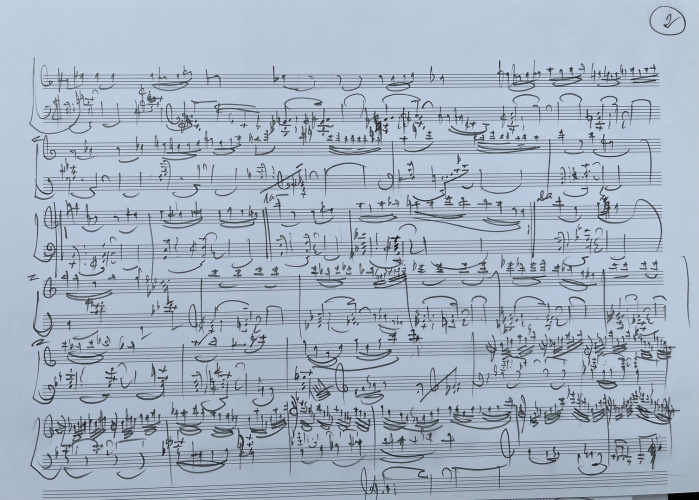
QUATRE PRÉLUDES pour flûte (flûte à bec en fa ou txistu) et clavier
Title, Duration, Place, Year, Publisher, Dedicated to, Premiere (performer(s), place, date)
QUATRE PRÉLUDES pour flûte (flûte à bec en fa ou txistu) et clavier, 13', Chatou, 2017, Schott, to Jose Ignazio Ansorena and Ana Belén García Pérez, Ana Suhaila Haboud, flute, Georges Daccache, piano, Philokalia, Lebanon, 28.12.23.
Ces Quatre Préludes pour flûte (flûte à bec ou txistu) et piano, sont nés de la contrainte de l’ambitus du txistu basque. Le prélude initial, Allegro, est marqué par son caractère joyeux, sa rythmique aksak (3+3+2), ses modulations généreuses et son flux ininterrompu dans l’esprit de l’Humoresque (deuxième mouvement du Diptyque pour txistu et piano de Naji Hakim). Le deuxième prélude, Moderato, se distingue par une expression plus tendre, un principe de la variation ornementale, conjugués à une recherche de diversité tonale. Le troisième prélude, également Moderato, s’inscrit dans une rythmique ternaire avec de longues lignes mélodiques expressives accompagnées par des accords en rythme amphibraque. Le Presto conclusif est un saltarello se développant dans un jeu de modulations serrées.
These Four Preludes for flute (recorder or txistu) and piano, were born from the constraint of the Basque txistu's ambitus. The initial prelude, Allegro, is marked by its joyous character, its aksak rhythm (3 + 3 + 2), its generous modulations and its uninterrupted flow in the spirit of the Humoresque (second movement of the Diptyque for txistu and piano by Naji Hakim). The second prelude, Moderato, is distinguished by a softer expression, a principle of ornamental variation, combined with a search for tonal diversity. The third prelude, also Moderato, is in ternary rhythm with long expressive melodic lines accompanied by chords in amphibraque rhythm. The conclusive Presto is a saltarello developed in a game of tight modulations.

